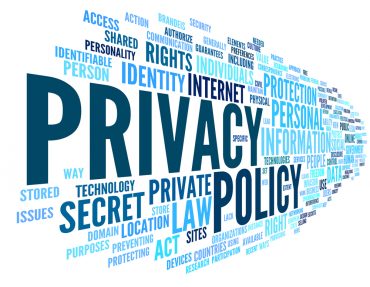
While 2017’s holiday retail sales seem to have broken records, real-time tech may hold some of the clues as to why it was so epic of a shopping season.
With the 2017 holiday season behind us, let us pause and remember that this past year’s Cyber Monday was the biggest shopping day in U.S. history — with more than $6.59 billion in sales, including a record-breaking $2 billion in mobile sales.
The retail industry also witnessed higher traffic tied to omnichannel shopping. According to the National Retail Federation (NRF), 51 million Americans shopped exclusively in stores throughout the Thanksgiving holiday weekend, 58 million Americans shopped exclusively online, and a majority 65 million shopped both. Given these numbers so far, the NRF is cruising toward its expected number of $682 billion in holiday sales this year.
See also: How AI is transforming the retail sector
For many shoppers, their insights and strategies have centered thus far on information gleaned from online sources and wireless devices. During Black Friday, customers arrived armed with information, ready with online ads, reviews and price comparisons. They leveraged those same insights online the following Monday.
So as we start a new year and with quarterly earnings season upon us, we can expect clear winners and losers in the competition for holiday sales. Companies that made the most of the connected consumer experience will likely celebrate while others look at the year ahead to prepare. Retail employees spent much the year preparing for this surge of the connected shopper through social marketing campaigns and a rock-solid connection to the Internet over a free Wi-Fi or 4G LTE connection.
It’s Never Too Early For Retail to Plan
If retailers did not fall into this camp or are looking for how to better prepare for next year, they’ll have to use every technological means necessary to manage inventories on the fly, reduce checkout wait times, adjust prices and leverage customer information gathered from their shopping habits. It’s never too early to start planning and to take lessons learned this season into account for next year.
#1: Improve Bandwidth to Manage Surges
The rapid growth of applications for connected devices and opportunities presented by increasingly connected retail environments must be met with sufficient bandwidth and data. Retail network administrators face a particular challenge in bandwidth management due to the varied data usage that surges in customer traffic can cause. This often results in overages or unused data, creating an environment that it is nearly impossible to accurately budget for data usage.
While many see Black Friday as a sprint toward the end of the holiday shopping season, retail IT professionals see it as a marathon that starts early in the year. Retailers can achieve up to 20 or 30 percent of their sales during this time of year while brand reputations and customer loyalties can be made or broken. In this omnichannel world, retailers are now looking to bring stores to where customers are which requires an Omni-WAN approach. So it’s essential for these companies to empower their IT to build the networks and strategies they need to compete and survive the holidays.
#2: Cloud-based Applications Lighten the Load
As retailers grow and expand to multiple locations, many maintain a connection to the cloud. Cloud-based applications help retailers track and respond to customer information and needs, offload IT to cloud-based service providers and track data that influences inventory decisions. When retailers manage hundreds or thousands of dispersed locations, cloud-managed networks are a necessity.
#3: Utilize Mobile Point-of-Sale (POS) Applications
A mobile POS is a smartphone, tablet, or dedicated wireless device that performs the functions of a cash register or electronic point of sale. For example, customers in a restaurant can order their meal via a tablet at their table or retailers can use an iPad to check stock/inventory on the sales floor while talking directly with a customer.
This way, not only is the display floor highly modern, sales associates can get to customers before they have a chance to change their minds. By tapping into mobile POS applications, retailers can then drive sales by breaking up lines during peak traffic. That said, it’s crucial that these mobile inventory solutions are always connected.
#4: Encourage and Make the Most of BYOD
While some retailers insist employees leave their smartphones at home, the smart ones make the most of their workers’ personal devices. Employees equipped with their mobile devices can more easily and quickly provide customers with information to affect sales. They can use their own devices to access employee portals for training and payroll management and stay up to date on product and promotional information.
By allowing employees to access their own devices, retailers can hire and retain better workers while still facilitating excellent customer service. And in an industry known for high turnover rate, retailers can reduce costs and mitigate the risk of device loss by allowing for BYOD instead of distributing store-owned devices to each employee.
However, every BYOD strategy needs to mitigate the increased potential for threats by implementing security strategies that include intrusion protection services/intrusion detection services (IPS/IDS), content filtering and visibility into applications and devices. Also, network administrators should keep employee devices within PCI Compliance mandates.
#5: Get Acquainted with Beacons
Retailers like Target are using Bluetooth Low Energy (BLE) technology to enable micro-location tracking — called “beacon” — in a way that offers far more accuracy than smartphone GPS. With beacon solutions from Apple, Google and others, smartphones can notify other devices in proximity to their presence as they move through a store, transmitting data about the device owner.
Besides making in-store payments on their phones, shoppers can also receive targeted advertisements and information about sales and service offerings. In turn, retailers gain customer data that helps them make informed decisions about staffing and enables them to optimize their store layout for the best traffic flow. They can also influence buyer behaviors and overall experience through real-time and predictive analytics.
For accurate data collection, beacons need constant connectivity and consistent signal strength. Additionally, as with any technology that collects or transmits customer data, a secure connection is critical.
#6: Custom and Dynamic Digital Signage
When beacon solutions are combined with digital signage, retailers can offer location-based content as customers move through a store. Add in analytics, and they can offer promotions and discounts, update pricing and create upsell opportunities.
Digital signage offers the speed and flexibility needed to make omnichannel marketing more effective and precise by enabling retailers to switch content remotely when needed. By making remote changes to content, they save time and money otherwise spent on manual modifications. If a retailer has access to a robust 3G/4G LTE connection, custom digital signage can be moved outdoors to attract customers to their stores.
#7: Anticipate the Omnichannel Customer
Holiday shoppers this season are thriving on multiple sales and marketing channels spanning social media, retailer websites and apps all over a variety of devices. In response, retailers are moving away from multichannel marketing and adopting an integrated strategy covering all channels, or omnichannel retailing.
Omnichannel retailing eliminates distinctions between the different channels customers use to interact with a brand. Instead, this holistic approach acknowledges customers may engage over multiple channels before making a purchase. With an omnichannel strategy, retailers can create seamless brand experiences across multiple channels, meet customer demand for interactivity, gather consumer data and maximize profits.
For example, Crate & Barrel uses omnichannel services for their customers to create registries online or in store. Customers can also use the Crate & Barrel mobile app to scan barcodes in the store, update their registries and monitor their purchases.
#8: Leverage, Don’t Shun “Showrooming”
Savvy customers often use guest WiFi to “showroom,” or compare prices, read reviews, and sometimes even complete their purchases online. There are multiple approaches to combating showrooming, but if handled correctly, this customer behavior can generate nearly as much opportunity for retailers as the potential threat it poses.
When customers showroom through guest WiFi, retailers can gather online intelligence about their behaviors. This information enables them to develop more personalized customer content and experiences. Retailers may also influence buying behavior on mobile devices in store with strategic ads. Finally, retailers can use connectivity solutions to filter or block competitor websites and applications.







